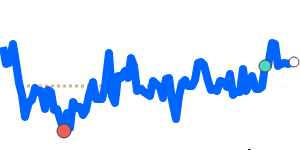Recent forecasts for the USD to HUF exchange rate indicate ongoing volatility influenced by both the US dollar's performance and the Hungarian forint's recent developments. Analysts have noted a pronounced weakening of the US dollar, recently attributed to a surprising decline in US inflation, dropping from 3% to 2.7%, which heightened expectations for accelerated rate cuts by the Federal Reserve in 2026. The decline in inflation data has prompted traders to price in aggressive monetary easing tactics, leading to downward pressure on the dollar.
Despite mixed economic indicators from the US—including resilient labor market metrics juxtaposed against slowing consumer spending—the overall sentiment appears to favor a weaker USD. Market expectations suggest that if inflation continues to soften, the Federal Reserve may initiate multiple rate cuts as early as mid-2026. This dovish outlook is contributing to a bearish forecast for the USD, particularly as geopolitical tensions ease and risk sentiment stabilizes.
Simultaneously, developments surrounding the Hungarian forint have painted a contrasting picture. Recently, the forint appreciated to its strongest levels since December 2023, attributed to disciplined monetary policy from the Hungarian National Bank and favorable currency-swap arrangements. However, challenges remain, as recent inflation data showed core inflation rising above targets, and fiscal concerns loom with the public finance deficit climbing to 5% of GDP. Such factors could pose risks to the forint, especially amid upcoming elections and increasing geopolitical pressures.
Currently, the USD to HUF exchange rate is trading at around 328.6, reflecting a 1.1% decrease from its three-month average of 332.2. The rate has remained relatively stable within a 3.8% range of 326.0 to 338.5. Analysts suggest that with the US dollar's vulnerability amid expectations of rate cuts and the forint's mixed outlook driven by domestic fiscal issues, currency traders should stay alert to upcoming economic data releases and central bank communications, which will likely influence future exchange rate movements.

